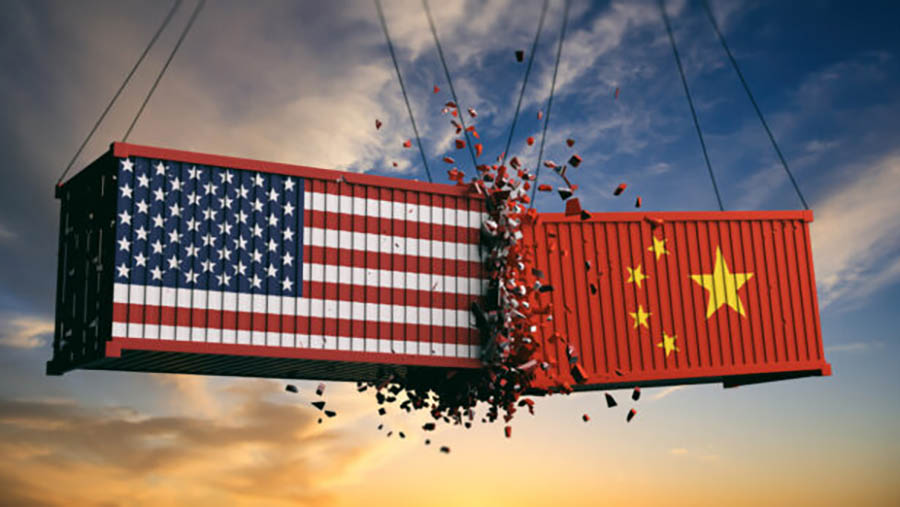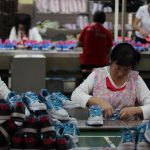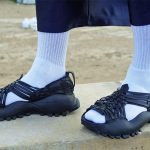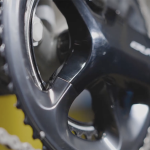During a press conference following comments with Israel Prime Minister Benjamin Netanyahu on Monday afternoon, April 7, U.S. President Donald Trump threatened to add another 50 percent to the tariffs assessed on goods coming out of China and shipped to the U.S. At issue was what Trump said was an effort to strike a trade deal with China that would be fair to both sides. And China’s latest move on Friday, April 4, to assess a 34 percent retaliatory tariff lit the fuse.
This latest increase would be in addition to the 34 percent reciprocal tariff Trump set last week and the 20 percent tariff already in place when he entered his new term in office, making for a potential total of 104 percent.
The tariff threat came as Trump took issue with China’s action to assess the retaliatory tariff announced last week.
“China urges the United States to immediately cancel its unilateral tariff measures and resolve trade differences through consultation in an equal, respectful and mutually beneficial manner,” Xinhua cited the finance ministry according to a report translated via Google and first reported by CNBC.
The Finance Ministry further criticized Washington’s decision to impose 34 percent of additional reciprocal levies on China, bringing total U.S. tariffs against the country to 54 percent, as “inconsistent with international trade rules” and “seriously” undermining Chinese interests, as well as endangering “global economic development and the stability of the production and supply chain,” the business network wrote.
Trump made the latest comment on the 104 percent tariffs in a press conference while responding to a question regarding tariffs, echoing a post he made on Truth Social earlier in the day that suggested that if China did not immediately back down, “the United States will impose ADDITIONAL Tariffs on China of 50 percent, effective April 9th.”
China is less impactful for many in the active lifestyle market and appears to be most significant for some hardgoods and value-oriented footwear and apparel softgoods. That reality was exposed after several media outlets, including SGB Media (see link to coverage at the bottom of this post), provided the source countries for major brands. For instance, Nike has moved most of its production out of China in favor of Vietnam.
Unfortunately, the Trump Administration also went after Vietnam and other Southeast Asian countries with its “reciprocal” tariffs calculated on a formula based on tariffs imposed by the other government as well as the trade surplus/deficit between the U.S. and the source country.
Those tariffs announced Wednesday, April 2, were assessed at 46 percent for Vietnam.
While the markets pulled back a bit on its adverse reaction on Friday, April, after Trump, the Trump Administration and the Vietnamese government suggested that dialog had already started on settling the trade issues between the two nations, including Vietnam offering zero tariffs on U.S. goods coming into Vietnam, there was confusion Monday morning, April 7, as some in the Trump Administration said the U.S. was open to negotiating, while others, such as trade hawk and Presidential Counselor Peter Navarro said zero tariffs would be a start.
“Zero means nothing,” Navarro said in a CNBC interview, suggesting there is more at play than just offering tariff relief. He went on to raise the issue of seafood dumping in the U.S., which impacts the seafood business along the Gulf Coast, especially the shrimp producers.
“Just had a very productive call with To Lam, General Secretary of the Communist Party of Vietnam, who told me that Vietnam wants to cut their Tariffs down to ZERO if they are able to make an agreement with the U.S.,” Trump stated in a Truth Social post. “I thanked him on behalf of our Country and said I look forward to a meeting in the near future.”
Shares in several companies that have moved a large percentage of their manufacturing operations to Vietnam, including Nike, Inc. and Lululemon Athletica, Inc., soared Friday, April 4, after Trump said Vietnam was willing to eliminate tariffs to avoid new U.S. levies.
Nike shares gain 3 percent on April 4, to cut into its 14.4 percent decline on April 3. On Holding AG went from down 16.2 percent on April 3, to up 5.2 percent on April 4. Skechers USA, Inc. also rose 2.5 percent on April 4, after falling 17.1 percent on April 3. Other double-digit losers on April 3, including Foot Locker (-15.2 percent), Deckers (-14.5 percent), Crocs (-14.0 percent) and Columbia (-13.2 percent), were back up in low- to mid-single-digit percentages on April.
Lululemon shares gained 3.2 percent on April 4 after declining 9.6 percent on April 3. Wolverine World Wide, the biggest loser on April 3, tracked by SGB Media, saw a partial reversal on April 4 with a 5.9 percent gain.
See below for additional SGB Media coverage of the Trump Global Tariffs
EXEC: Trump Tariffs Hit Active Lifestyle Stocks Hard; Vietnam Hit a Big Surprise
EXEC: Rip Curl and Oboz Owner First Vendor to Re-Direct Inventory Destined for U.S.
















